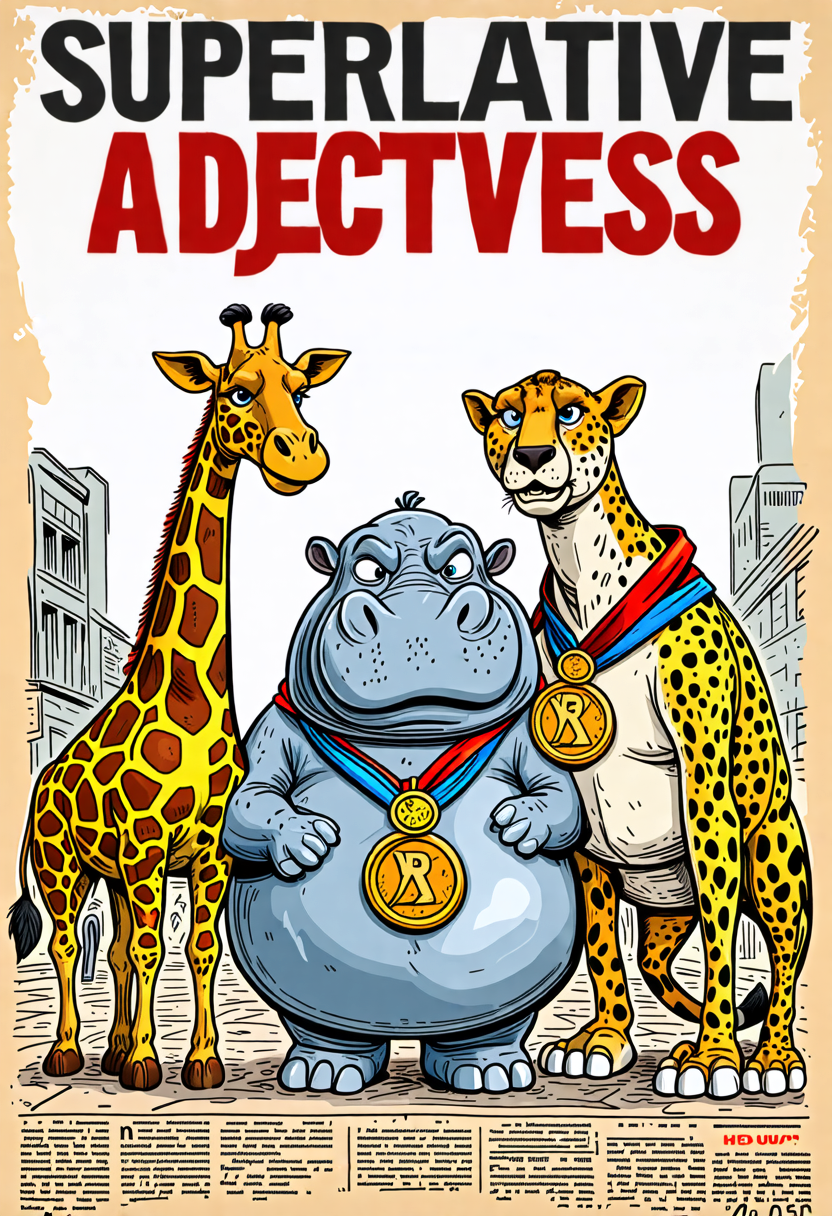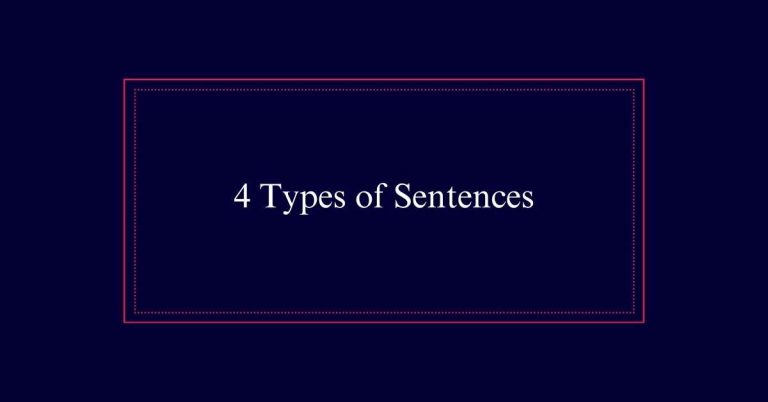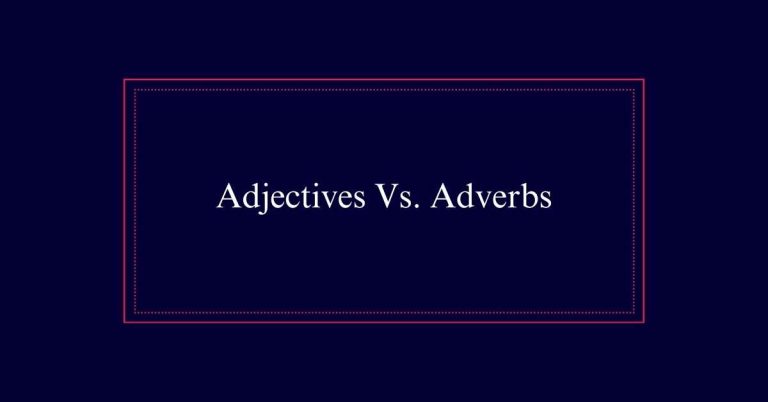What Are Superlative Adjectives?
Superlative adjectives describe the extreme or highest degree of a quality among three or more items. They are formed by adding ‘est’ to short adjectives, such as “fast” becoming “fastest,” or by using ‘most’ before longer adjectives, like “beautiful” becoming “most beautiful.”
These adjectives usually go before the noun they modify and highlight either the highest or lowest comparison within a group. For instance, “She is the tallest in the class” or “This is the most interesting book I’ve read.”
Definition of Superlative Adjectives
What exactly are superlative adjectives?
Superlative adjectives are a form of adjectives used to compare three or more things. They show the highest or lowest degree of a quality within a group. For example, in the phrase ‘the tallest building,’ ‘tallest’ is a superlative adjective.
To form superlative adjectives, one typically adds the suffix ‘est’ to short adjectives, such as ‘fastest’ for ‘fast.’ For longer adjectives, the word ‘most’ is used, like ‘most interesting.’ However, some adjectives, like ‘unique,’ are absolute and cannot be compared.
Superlative adjectives usually precede the noun they modify and are often accompanied by the article ‘the’ or a possessive adjective/noun.
Purpose of Superlative Adjectives
The primary purpose of superlative adjectives is to highlight the extreme degree of a quality among three or more items. They emphasize the highest or lowest degree of a characteristic within a group.
For example, in the sentence ‘She is the fastest runner in the school,’ the word ‘fastest’ shows that no other runner in the school surpasses her speed. Superlative adjectives help in distinguishing a single item as superior or inferior in a specific context.
They offer precision in comparisons, making it clear which item stands out. This usage is particularly essential in descriptive writing, allowing readers or listeners to understand the top-ranking member of a set without ambiguity.
Forming Superlative Adjectives
Forming superlative adjectives involves adding specific suffixes or using certain words depending on the length and structure of the adjective.
For one-syllable adjectives, add the suffix ‘est’. For example, ‘small’ becomes ‘smallest’. If the adjective ends in ‘e’, simply add ‘st’, as in ‘large’ becoming ‘largest’.
For adjectives with two syllables ending in ‘y’, ‘er’, ‘le’, or ‘ow’, add ‘est’ after changing ‘y’ to ‘i’, like ‘happy’ to ‘happiest.

For adjectives with two or more syllables, use ‘most’ before the adjective, such as ‘beautiful’ becoming ‘most beautiful’.
This rule helps maintain clarity and simplicity in comparisons, ensuring the adjective accurately reflects the highest degree within a group.
Exceptions in Comparisons
While forming superlative adjectives is typically straightforward, there are notable exceptions in comparisons that require special attention. Some adjectives, such as ‘unique,’ cannot logically take a superlative form because they describe an absolute state. You cannot have ‘most unique’ since ‘unique’ means one of a kind.
Additionally, irregular adjectives like ‘good’ and ‘bad’ have special forms: ‘best’ and ‘worst,’ respectively. Another exception is adjectives ending in ‘y,’ which change to ‘iest’ instead of ‘est,’ such as ‘happy’ becoming ‘happiest.’
Additionally, two-syllable adjectives not ending in ‘y’ often use ‘most’ instead of ‘est,’ like ‘careful’ becoming ‘most careful.’ Understanding these exceptions ensures proper and accurate comparisons.
Usage in Sentences
Superlative adjectives often modify nouns by indicating the highest degree of a quality within a group. They are typically placed before the noun they modify. For example, in ‘the tallest building,’ ‘tallest’ is the superlative adjective.
The definite article ‘the’ is commonly used to specify the noun’s top position in its category. Alternatively, a possessive adjective can replace ‘the,’ as in ‘John’s fastest car.’ When used in comparisons where the noun is compared with itself over time, the article may be omitted. For instance, ‘He is happiest when playing music.’
Superlative adjectives provide clarity by highlighting the extreme degree of a trait, making them essential in descriptive writing.
Using ‘Most’ With Superlatives
Many superlative adjectives require the word ‘most’ to demonstrate the highest degree of a quality. This is especially true for adjectives with three or more syllables. The word ‘most’ helps to clearly indicate the top position within a group.
Here are a few examples that may evoke a sense of wonder:
- Most beautiful – highlighting the pinnacle of beauty.
- Most fascinating – showcasing the ultimate level of interest.
- Most important – signifying the utmost significance.
Using ‘most’ with superlatives simplifies the comparison, making it clear and straightforward. It guarantees that the adjective’s meaning is understood without any confusion. This method is essential, especially when dealing with longer adjectives that do not follow the simple ‘-est’ suffix rule.
Spelling Rules Explained
To form superlative adjectives, specific spelling rules must be followed based on the word’s syllable count and ending.
For one-syllable adjectives, simply add ‘est’ (e.g., ‘fast’ becomes ‘fastest’).
If the adjective ends in ‘e’, add ‘st’ (e.g., ‘large’ becomes ‘largest’).
For adjectives with one syllable ending in a single consonant preceded by a single vowel, double the consonant before adding ‘est’ (e.g., ‘big’ becomes ‘biggest’).
Two-syllable adjectives ending in ‘y’ change ‘y’ to ‘i’ and add ‘est’ (e.g., ‘happy’ becomes ‘happiest’).
Most other two-syllable adjectives and those with more syllables use ‘most’ before the adjective (e.g., ‘beautiful’ becomes ‘most beautiful’).
Irregular adjectives follow unique rules (e.g., ‘good’ becomes ‘best’).
Comparing With Superlatives
When comparing three or more items, superlative adjectives help identify the highest degree of a quality within the group. They highlight the most outstanding feature in a set.
For example:
- The tallest building in the city captures everyone’s attention.
- She is the most talented musician in the orchestra.
- This is the oldest tree in the park.
Using superlative adjectives allows us to emphasize the extremities in a group. They are often formed by adding the suffix ‘est’ to short adjectives or by using ‘most’ before long adjectives.
Superlatives are essential in providing clear comparisons, making it easy to identify the best, worst, or most significant item among many. This helps in making precise and impactful statements.
Comparative Vs. Superlative
Comparative and superlative adjectives both serve to compare qualities, but they apply to different contexts. Comparatives are used when comparing two things. They often end in ‘-er’ or use the word ‘more’. For example, ‘She is taller than her brother.’
Superlatives apply when comparing three or more items. They typically end in ‘-est’ or use the word ‘most’. For instance, ‘He is the tallest in the class.’
The choice between comparative and superlative depends on the number of items being compared. Use comparatives for two items and superlatives for three or more. This distinction guarantees clarity in communication, highlighting whether you are discussing relative differences or the highest degree within a group.
Common Superlative Examples
Superlative adjectives highlight the highest degree of a quality within a group, such as ‘fastest,’ ‘most important,’ and ‘strongest.‘ These adjectives are essential in emphasizing the utmost extent of characteristics. They help in distinguishing one entity as superior within a set.
Here are three common superlative examples that evoke strong emotions:
- Happiest: Represents the highest level of joy, creating a warm and positive feeling.
- Smartest: Signifies the peak of intelligence, inspiring admiration and respect.
- Bravest: Denotes the utmost courage, stirring feelings of awe and inspiration.







